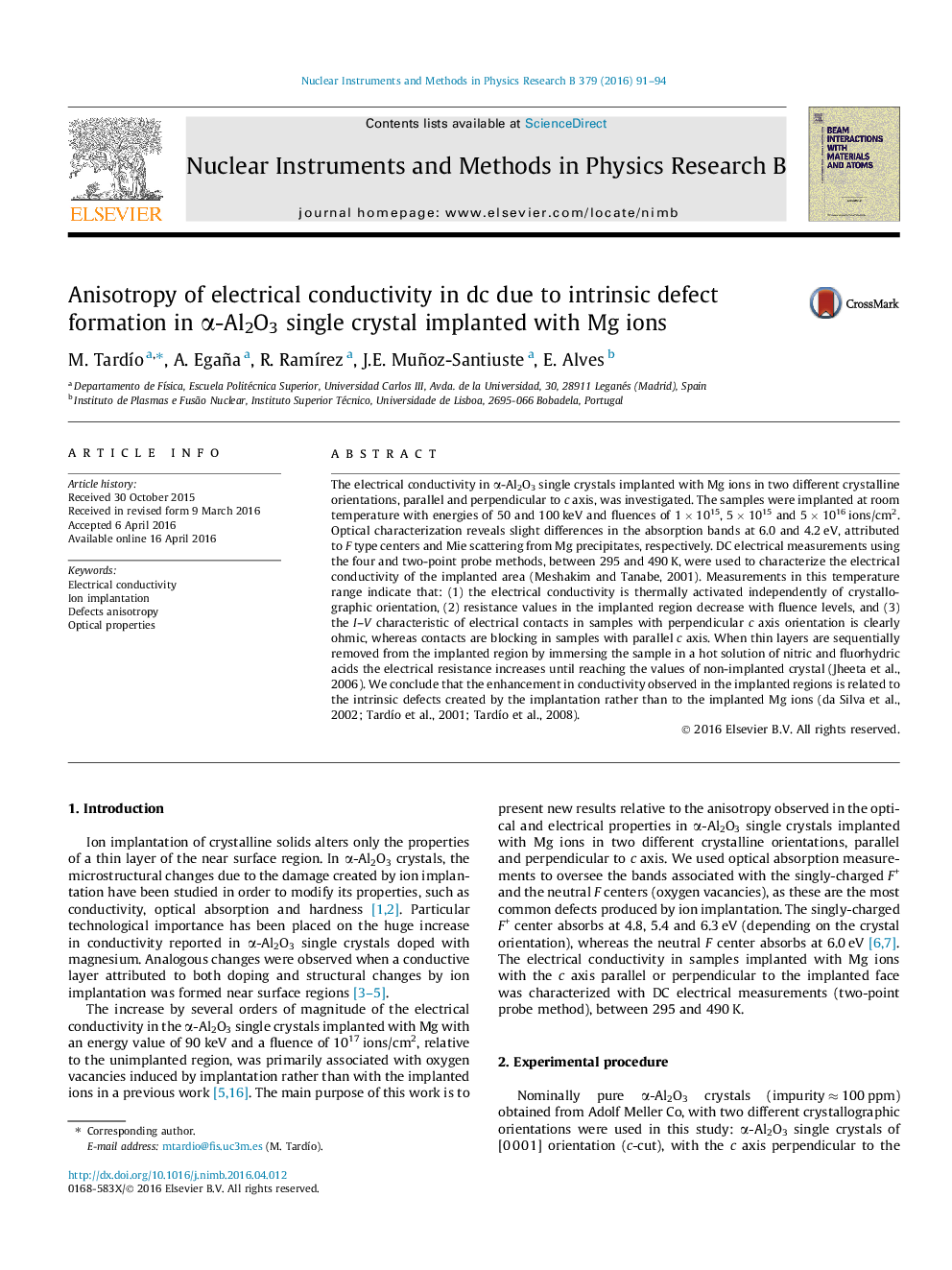| Article ID | Journal | Published Year | Pages | File Type |
|---|---|---|---|---|
| 1679732 | Nuclear Instruments and Methods in Physics Research Section B: Beam Interactions with Materials and Atoms | 2016 | 4 Pages |
The electrical conductivity in α-Al2O3 single crystals implanted with Mg ions in two different crystalline orientations, parallel and perpendicular to c axis, was investigated. The samples were implanted at room temperature with energies of 50 and 100 keV and fluences of 1 × 1015, 5 × 1015 and 5 × 1016 ions/cm2. Optical characterization reveals slight differences in the absorption bands at 6.0 and 4.2 eV, attributed to F type centers and Mie scattering from Mg precipitates, respectively. DC electrical measurements using the four and two-point probe methods, between 295 and 490 K, were used to characterize the electrical conductivity of the implanted area (Meshakim and Tanabe, 2001). Measurements in this temperature range indicate that: (1) the electrical conductivity is thermally activated independently of crystallographic orientation, (2) resistance values in the implanted region decrease with fluence levels, and (3) the I–V characteristic of electrical contacts in samples with perpendicular c axis orientation is clearly ohmic, whereas contacts are blocking in samples with parallel c axis. When thin layers are sequentially removed from the implanted region by immersing the sample in a hot solution of nitric and fluorhydric acids the electrical resistance increases until reaching the values of non-implanted crystal (Jheeta et al., 2006). We conclude that the enhancement in conductivity observed in the implanted regions is related to the intrinsic defects created by the implantation rather than to the implanted Mg ions (da Silva et al., 2002; Tardío et al., 2001; Tardío et al., 2008).
